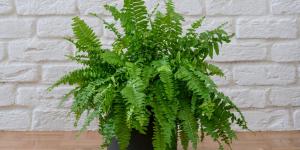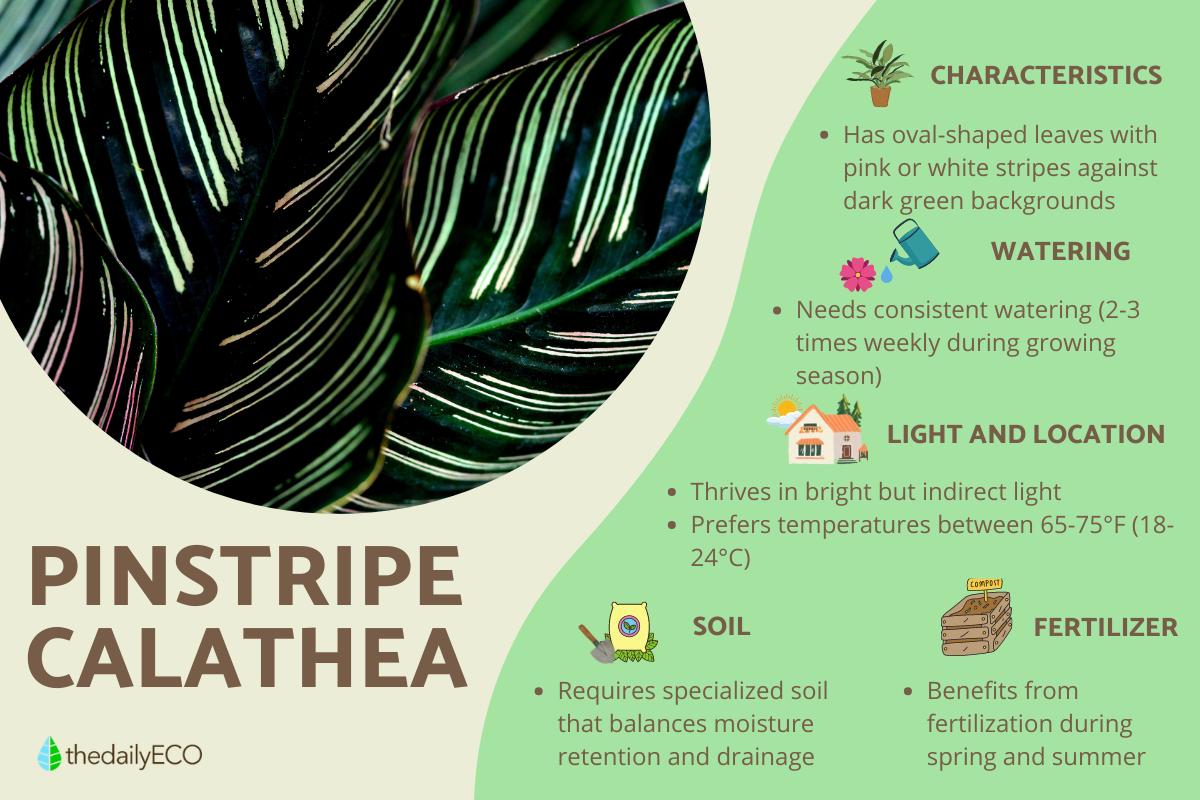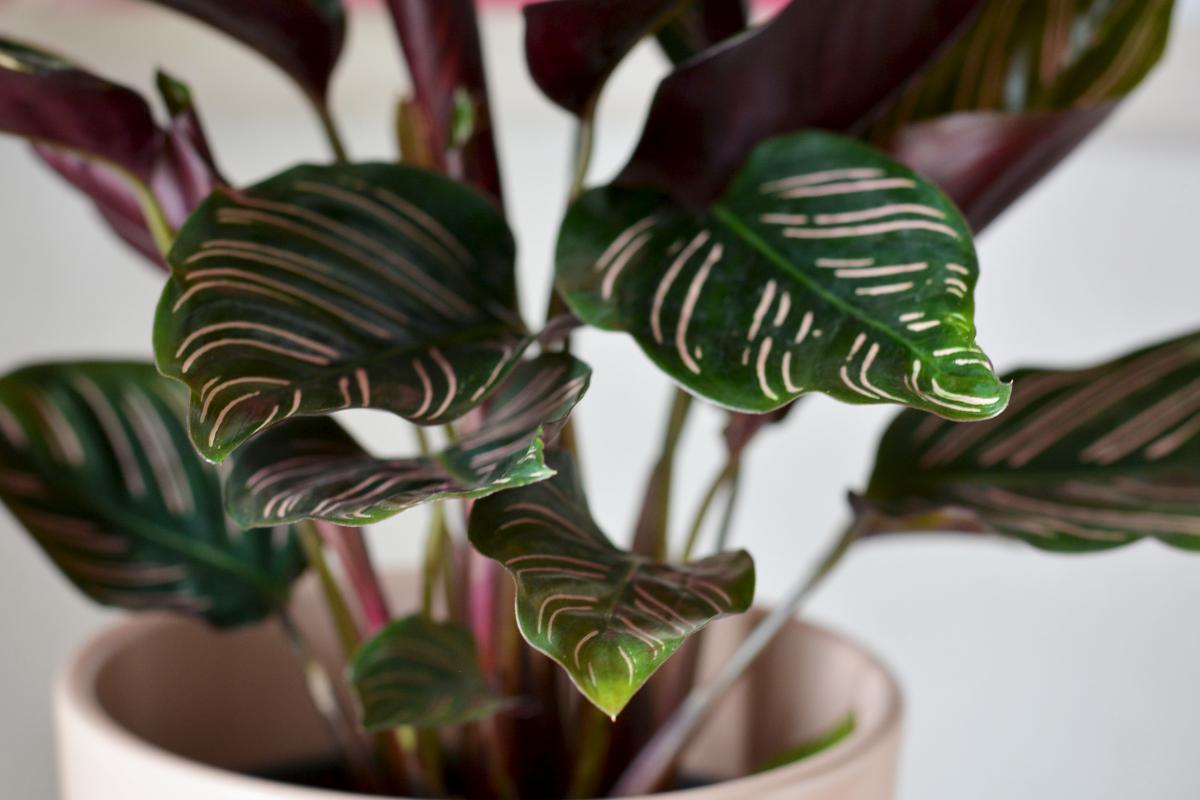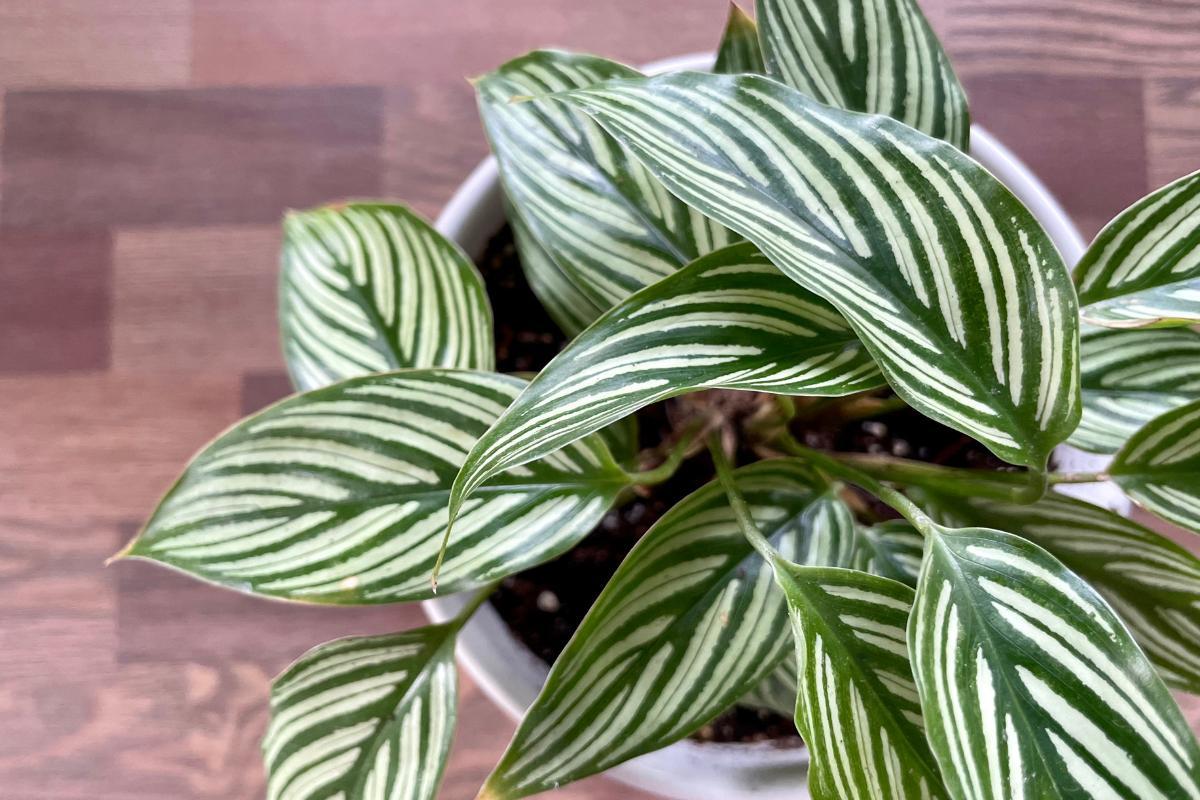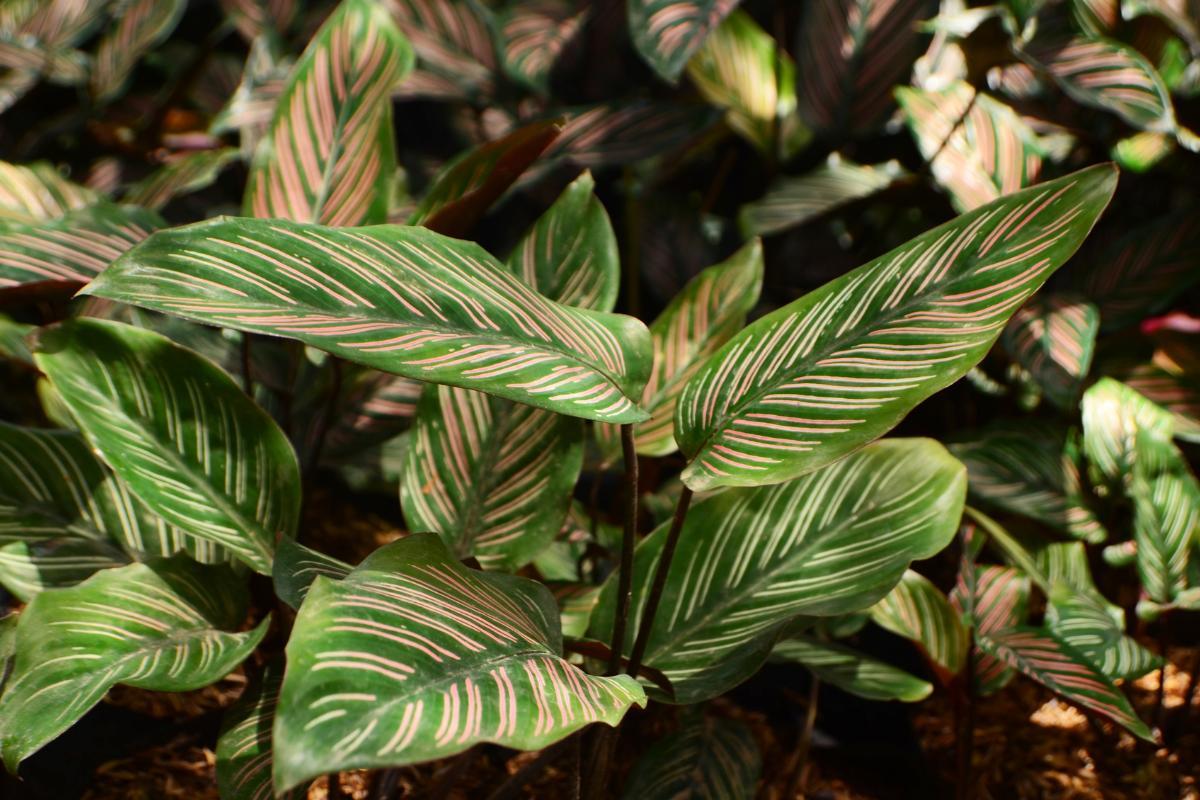How to Care for Pinstripe Calathea

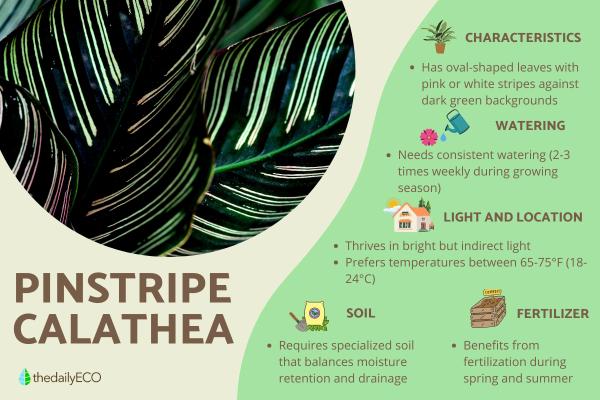
The Pinstripe Calathea (Calathea Ornata) is a stunning houseplant known for its elegant pink-striped leaves and tropical beauty. While this plant adds a touch of sophistication to any indoor space, it also requires proper care, the right watering routine, and attention to leaf health to thrive. Many plant owners struggle with brown, curling, or dry leaves, often caused by incorrect watering, low humidity, or lighting issues.
In this guide by thedailyECO, we’ll cover everything you need to know about Pinstripe Calathea care, including the best watering schedule, ideal growing conditions, and expert tips to keep your plant lush and vibrant.
Characteristics of Pinstripe Calathea (Calathea ornata)
The Pinstripe Calathea is native to tropical regions of South America, particularly Colombia and Brazil, where they grow on the forest floor beneath the tree canopy. This native environment explains their preference for filtered light and high humidity.
- It has distinctive leaves, which are oval-shaped with pink or white stripes against a dark green background. These plants typically grow 2-3 feet tall and 1-2 feet wide, developing from a central crown.
- What makes this plant special is its daily movement. The leaves fold upward in the evening (giving plants in this family the nickname "prayer plants") and open again in morning light. This pattern continues throughout the plant's life, which can last many years with proper care.
- These plants are completely flowerless when kept indoors. Their ornamental value comes entirely from their foliage. In their natural habitat, however, they can produce small, inconspicuous white flowers on short spikes.
- Pinstripe Calatheas help clean indoor air and are safe for pets and children. However, they can be somewhat particular houseplants.
Fallen in love with the Pinstripe Calathea? Discover its stunning relatives in our illustrated guide to the Calathea family.

Light and temperature for Pinstripe Calathea
Pinstripe Calatheas need bright but indirect light. Direct sunlight will damage their leaves, causing scorching or fading of their distinctive stripes. Place them near north or east-facing windows, or a few feet away from south or west-facing windows where light is filtered.
The plant's characteristic pink or white stripes depend on proper lighting balance. Too little light causes the stripes to fade as the plant produces more chlorophyll to compensate. Surprisingly, excessive light can also cause stripe loss as the plant tries to protect itself from light stress.
While Pinstripe Calatheas can survive in lower light conditions, they'll grow very slowly or become dormant. For plants in darker rooms, providing a few hours of filtered morning light elsewhere before returning them to their usual spot can help maintain health, though this isn't ideal for long-term care.
These tropical plants prefer temperatures between 65-75°F (18-24°C). They struggle in cooler environments and don't tolerate cold drafts, heating vents, or sudden temperature fluctuations. Their tropical origin makes them unsuitable for growing outdoors year-round in temperate climates where temperatures fall below 60°F (15°C).
Soil requirements for Pinstripe Calathea
Pinstripe Calatheas need soil that maintains consistent moisture without becoming waterlogged. Their roots are sensitive to both drought and soggy conditions.
A good homemade soil mix can be created by combining equal parts peat and worm castings, with vermiculite added for structure. This balance allows excess water to drain away while maintaining enough moisture between waterings, preventing the root stress that can lead to leaf problems.
During the spring and summer growing season, these plants benefit from regular fertilization. A balanced liquid houseplant fertilizer applied at half-strength every 4-6 weeks supports new leaf growth. It's best to stop fertilizing in fall and winter when the plant's growth naturally slows.
The right soil mix is particularly important for Calatheas because they're more sensitive to soil conditions than many other houseplants. Their specialized soil needs reflect their evolution as understory plants in humid tropical forests with consistent moisture levels.
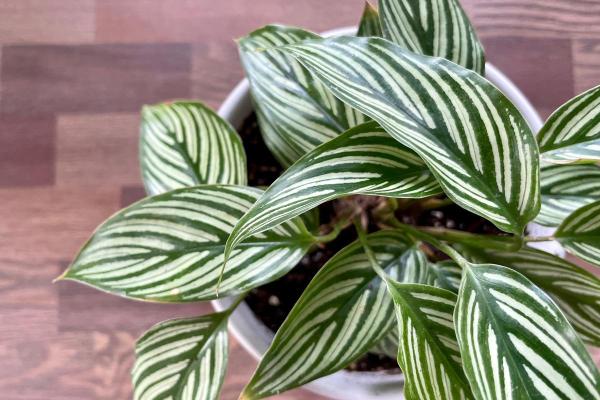
Watering requirements for Pinstripe Calathea
Pinstripe Calatheas need consistent moisture without becoming waterlogged. The soil should feel damp to the touch but never soggy or completely dry.
During spring and summer (the growing season), these plants typically need watering 2-3 times per week, depending on your home's conditions. In fall and winter, reduce watering frequency and allow just the top inch of soil to dry out between waterings, while keeping the deeper soil moist.
To check if your Calathea needs water, press your finger about an inch into the soil. If it feels dry at that depth, it's time to water. The plant will also communicate through drooping leaves when it's thirsty, though it's better not to wait until this point.
These plants are quite vulnerable to root rot from overwatering. When using decorative pots without drainage, place the plant in a nursery pot with drainage holes inside the decorative container. Always empty the catch tray or decorative pot about 30 minutes after watering to prevent the roots from sitting in water.
Humidity is essential for Pinstripe Calatheas, which naturally grow in tropical forest understories. They prefer humidity levels of 50% or higher. Low humidity often causes brown, crispy leaf edges even with proper watering, especially during winter when indoor heating systems dry the air.
Propagation of Pinstripe Calathea
Pinstripe Calatheas reproduce by developing offshoots or "pups" from their rhizomatous root system. These baby plants grow alongside the mother plant and can be separated to create new plants.
Spring is the ideal time for propagation as this gives the new plant the entire growing season to establish itself. When dividing your Calathea:
- Look for pups that have developed at least three leaves, which indicates they have sufficient energy reserves to survive on their own.
- Carefully remove the entire plant from its pot and gently separate the pup from the mother plant, ensuring each division has adequate roots attached.
- Plant the divided pup in appropriate potting soil that matches the requirements of the mother plant.
- Providing bottom heat can significantly improve success rates by stimulating root growth. The top of a refrigerator works well for this purpose, as it provides gentle, consistent warmth.
- Keep the newly potted pup in slightly higher humidity than usual during the establishment period, which helps prevent transplant shock.
Once the new plant shows signs of growth (usually within a few weeks), you can treat it like a mature Calathea, though it may be more sensitive to environmental changes until fully established.
This division method is the most reliable way to propagate Pinstripe Calatheas, as they cannot be propagated from leaf cuttings like many other houseplants.
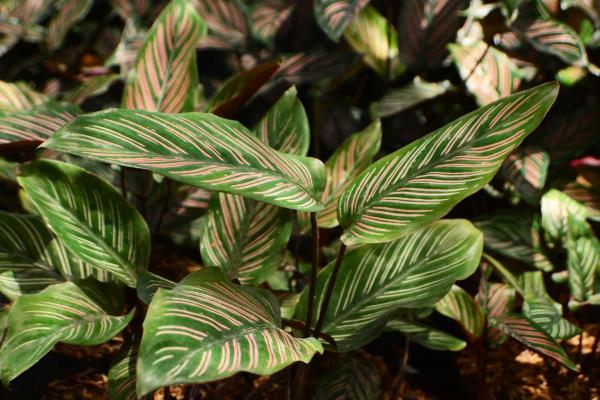
Common problems of Pinstripe Calathea
- Edema: occurs when plants take up water faster than they can use it through transpiration. This excess water causes cells to swell and rupture, creating watery patches on leaves. It typically happens after overwatering, especially when temperatures are cool and humidity is high, slowing the plant's transpiration rate.
- Root rot: develops when consistently soggy soil creates an environment for fungal pathogens to attack roots. Signs include yellowing leaves, wilting despite moist soil, and a foul smell from the soil. Unlike edema, which is a physiological disorder, root rot involves pathogens and can spread throughout the root system. Prevention involves proper drainage and allowing appropriate drying between waterings.
- Stunted growth: commonly results from insufficient light. When Pinstripe Calatheas don't receive adequate brightness, they conserve energy by slowing or stopping new growth. The plant may maintain its current size for months or produce smaller, less vibrant leaves. Moving the plant to brighter indirect light typically resolves this issue.
- Spotted leaves: often indicate spider mite infestations. These tiny pests pierce leaf cells to feed on plant fluids, creating a stippled or speckled appearance on leaves. Spider mites thrive in dry conditions and can be identified by fine webbing between leaves and stems when populations are high. Regular inspection, maintaining humidity, and treating with insecticidal soap can manage infestations.
- Brown leaf tips: signal low humidity. Calatheas need higher humidity than most homes provide, and when moisture levels drop too low, leaf edges dry out and turn brown or crispy. This problem is especially common in winter when heating systems dry indoor air. Increasing humidity through humidifiers, pebble trays, or grouping plants together can prevent further damage.
Is your Pinstripe Calathea showing signs of yellow foliage? Discover why this happens and how to fix it in our troubleshooting guide.
If you want to read similar articles to How to Care for Pinstripe Calathea, we recommend you visit our Plant care and cultivation category.
- Royal Horticultural Society (n.d.) Calatheas. Available at: https://www.rhs.org.uk/plants/calathea
- Kennerly, K. (2024). Happy, Healthy Houseplants: How to Stop Loving Your Plants to an Early Grave. United States: Page Street Publishing.


